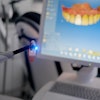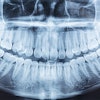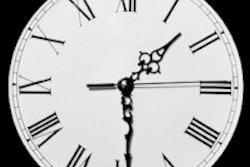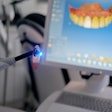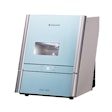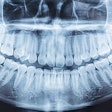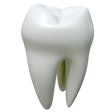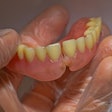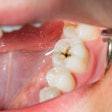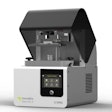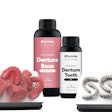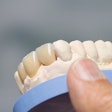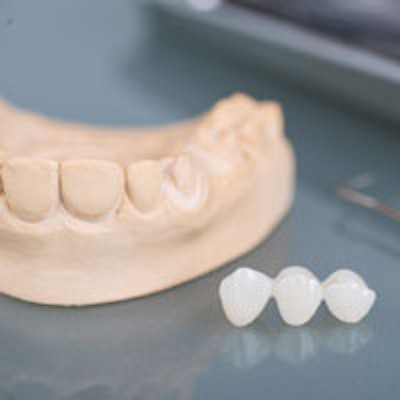
Is it necessary to use imaging powder to get the best results while scanning die stone? Not always, according to a new Journal of the American Dental Association study, which finds that imaging powder is not needed when a laboratory 3Shape 3D scanner is used (February 2015, Vol. 146:2, pp. 111-120).
The study authors, from the Taibah University College of Dentistry in Saudi Arabia and the University of Alabama at Birmingham School of Dentistry, also recommend using the least expensive powder when scanning titanium implant abutments.
Manufacturers of conventional dental scanners recommend imaging powder to enhance the reflectivity of a traditional stone, they noted. Also, a special CAD/CAM stone has been released as an alternative to the technique of spraying imaging powder directly on conventional stone.
However, marginal adaptation has not been investigated when it comes to the effects of spraying powder on conventional stone, special CAD/CAM stone, or a combination of both stone and powder, they study authors added.
"We wanted to determine if the imaging powder and CAD/CAM stone are required in dentistry with the release of highly sophisticated laboratory dental scanners," said lead study author Tariq Alghazzawi, PhD, in an interview with DrBicuspid.com.
The researchers were surprised to see that there was no effect of material type, grain size, and shape of the imaging powder on the marginal adaptation.
“The imaging powder is not required in dentistry except when scanning titanium abutments.”
"The imaging powder is not required in dentistry except when scanning titanium abutments," Alghazzawi said. Then he also recommended using the least expensive imaging powder.
To study this marginal gap, Alghazzawi and his colleagues prepared a melamine mandibular left first molar for placement of zirconia crowns. The melamine tooth was prepared and scanned using a laboratory 3D scanner from 3Shape (Model D900) to mill a polyurethane die, which was duplicated into three types of stone dies and one titanium die.
The three stone dies used in the study included Cerec Stone BC (Sirona Dental Systems), Lean Rock XL5 stone (Whip Mix), and Jade stone (Whip Mix). The researchers sprayed the dies with imaging powders, creating various combinations of three types of die stones with imaging powders, die stones without imaging powder, and the titanium die with three types of imaging powders that were used to mill crowns.
The imaging powders used included Vita powder (Vident), IPS contrast powder (Ivoclar Vivadent), and Optispray powder (Sirona).
The researchers injected a light-bodied impression material into the intaglio surface of each crown, and the restoration was then positioned on the corresponding die. After complete polymerization, they removed the crown from the corresponding die and injected the monophase material to form a monophase die, which was cut into eight sections.
The researchers captured digital images of each section of the monophase die using a stereomicroscope at 40x magnification, and they used image analysis software to measure the marginal gap on each image.
The study authors found that the various combinations of imaging powders, die stone materials, and the titanium die resulted in zirconia crowns with clinically acceptable margins (below 100 µm).
They reported no statistical difference in the marginal gaps when different stone types were scanned without imaging powders, regardless of the stone type. Also, when different stone dies were sprayed with the same imaging powder, similar marginal gaps were seen indicating that the effect of a particular imaging powder was similar on different die stones. Conversely, there was no effect of different types of imaging powders on the marginal gap of the same stone type.
Finally, the researchers found no statistical difference in the marginal gaps of the zirconia crowns when the titanium die was sprayed with the three types of imaging powder.
"Within the limitations of this study, which utilized a [3Shape] scanner, there was no effect of composition, optical properties, or form of titanium in different imaging powders on the marginal gaps of zirconia crowns as measured on a titanium die as well as on conventional and special CAD/CAM die stones," the authors wrote.
Therefore, they recommended that cost should be the main considerations when selecting imaging powder for scanning titanium abutments.
As for selection of stone material when scanning master dies using a 3Shape scanner, physical properties (compressive strength, initial setting time, working time, setting expansion), and the desired color preference should be the main considerations, according to the study authors.
"Future research will investigate marginal gap measurements after cementation to titanium and zirconia dies combined with aging of zirconia restorations," they concluded.
